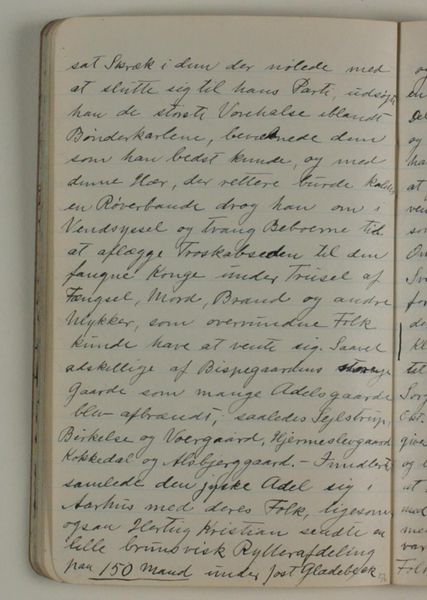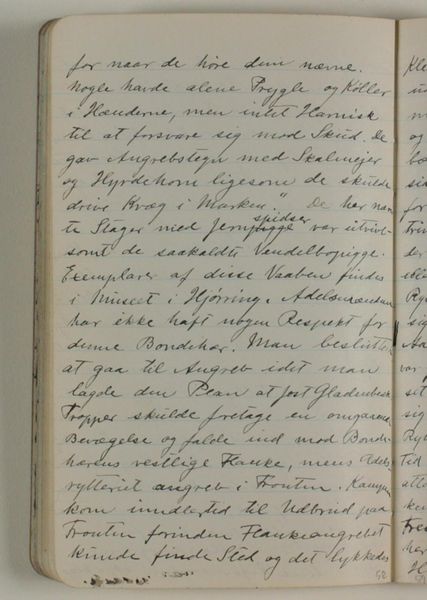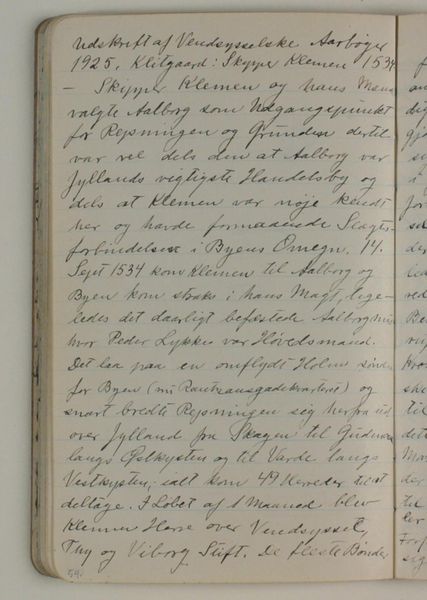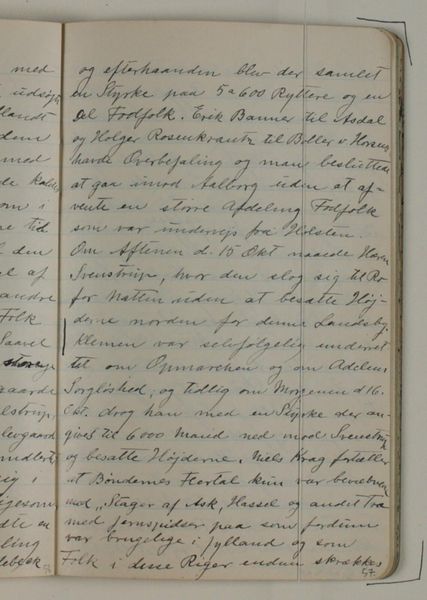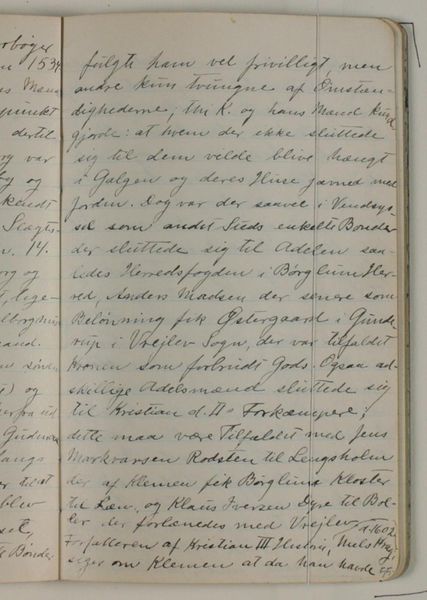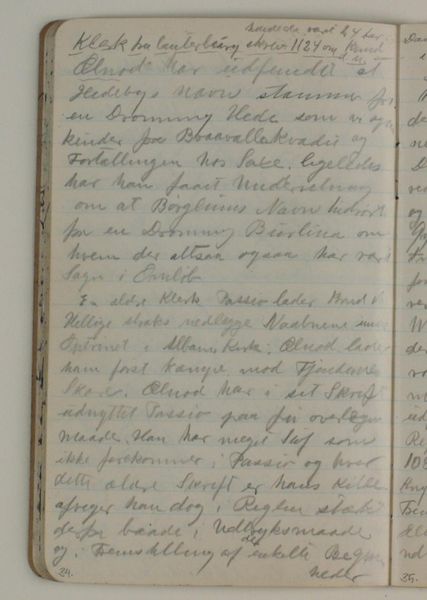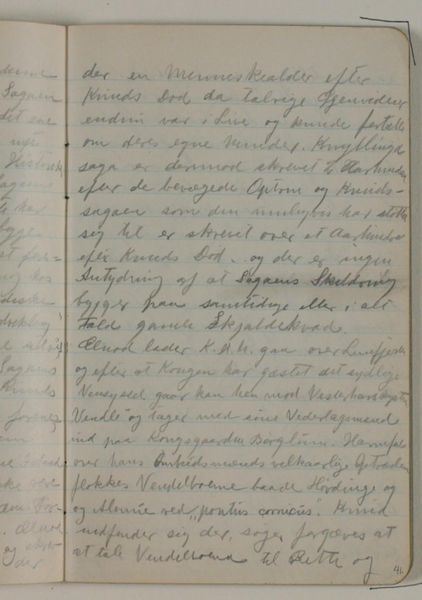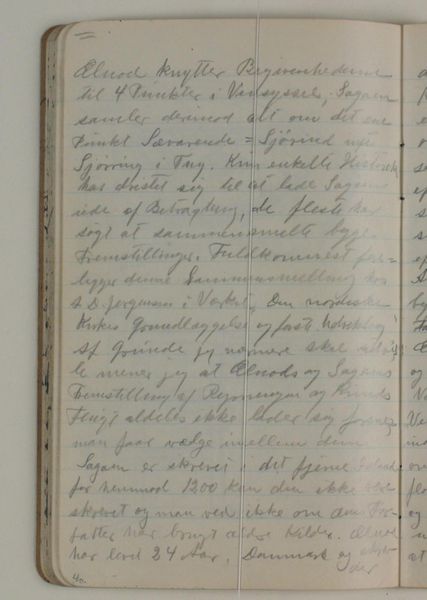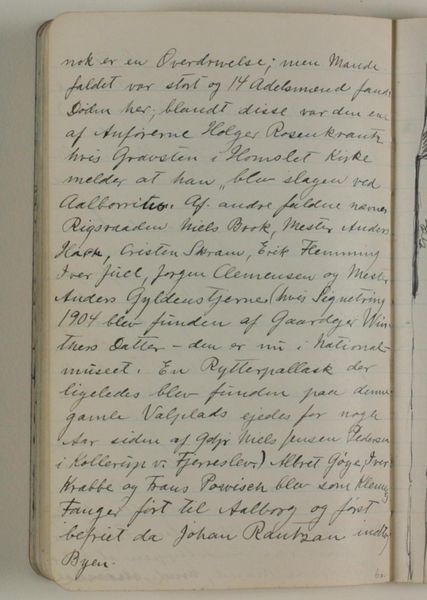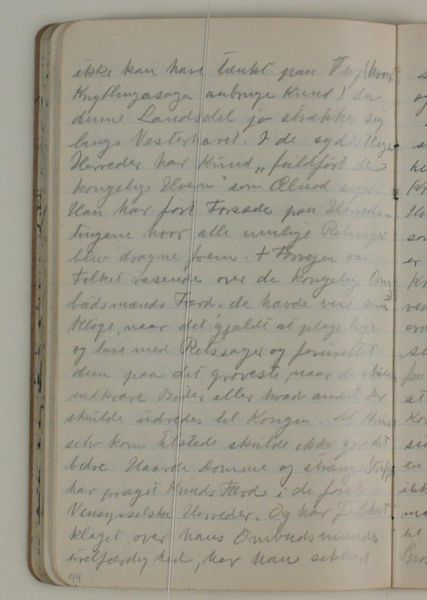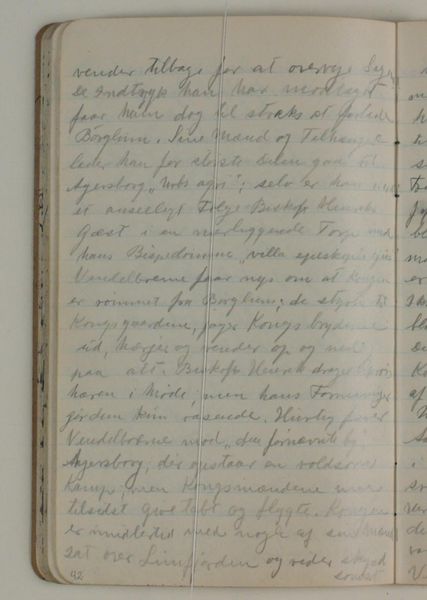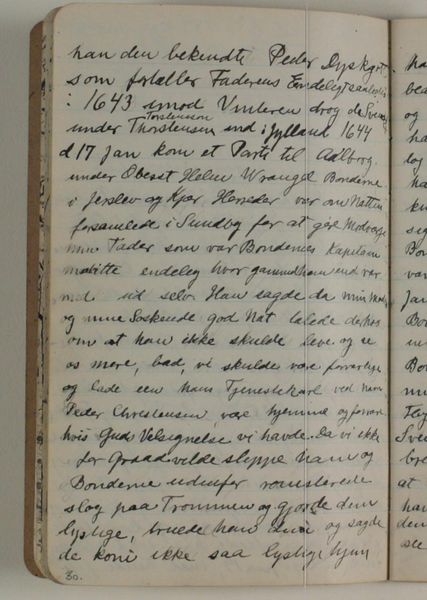
Notater vedrørende Skipper Klementes opstand og slaget ved Svendstrup mose. Afskrift efter Vendsyssel Aarbøger 1925 1933 - 1934
0:00
0:00
drawing, paper, ink
#
drawing
#
paper
#
ink
#
calligraphy
Dimensions: 175 mm (height) x 109 mm (width) (monteringsmaal), 175 mm (height) x 109 mm (width) (bladmaal)
Curator: Editor: Niels Larsen Stevns' 1933 to 1934 ink drawing on paper, "Notater vedrørende Skipper Klementes opstand og slaget ved Svendstrup mose. Afskrift efter Vendsyssel Aarbøger 1925" is, well, literally a page out of history. It looks like handwriting—historical notes, perhaps? What can you tell me about it? Curator: Yes, exactly! I think Stevns created something intriguing by hand-copying text related to the Peasant Revolt led by Skipper Clement. You're not just looking at a drawing, but at an act of transcription that's part history, part performance. The act of handwriting, the meticulousness – doesn't it hint at something reverential, or perhaps… a little obsessive? Editor: Obsessive! Yes, I can see that. The handwriting *is* very uniform. Was calligraphy a common practice at the time? Curator: Good question! Calligraphy as an art form had experienced a revival, connecting to ideas of craft and national identity, especially relevant in the interwar period. How does that context affect how you view this historical reflection? Editor: Knowing that context… It's not just notes; it's almost like a historical reenactment through script! A physical engagement with history. But why handwriting rather than just reprinting the text? Curator: Precisely! Perhaps the act of handwriting offered a deeper, more intimate connection to the past for Stevns. Consider the difference between passively reading text versus painstakingly recreating it by hand. Doesn't the latter involve a level of empathetic understanding? Almost inhabiting the past? Editor: So, more than just a document, it's an artistic interpretation *of* a document? Curator: Indeed. It blurs the lines between historical record and personal expression. That’s Stevns’ magic. It’s got me pondering, what ways might our future chroniclers record this current moment? Editor: That’s an amazing way to consider it! I initially thought it was *just* text, but now I realize Stevns is exploring history on a very personal level. Curator: I agree. We both just travelled through time a bit!
Comments
No comments
Be the first to comment and join the conversation on the ultimate creative platform.
